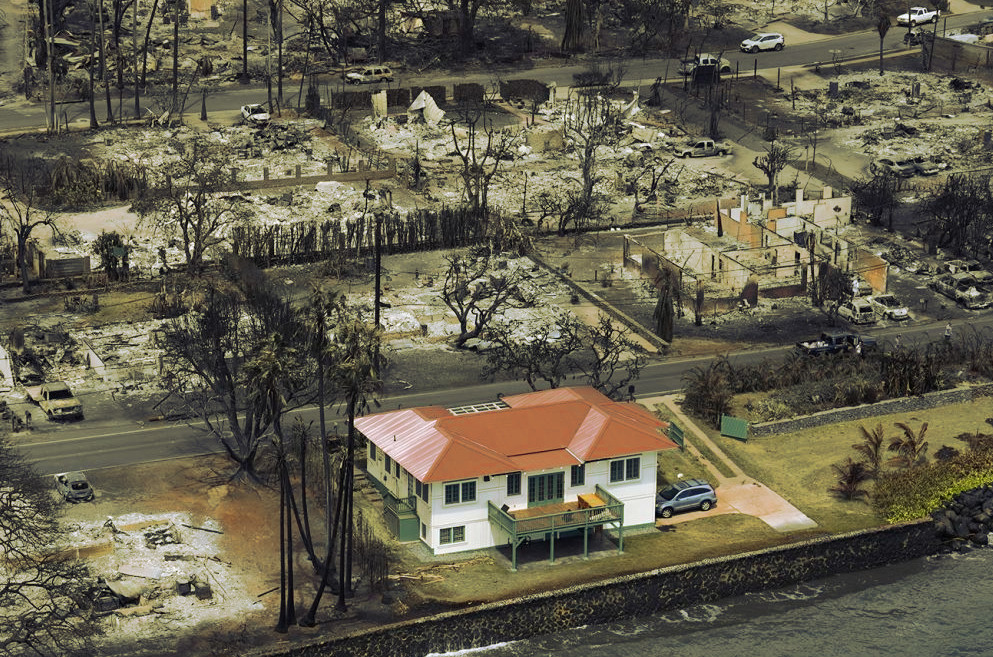 Ryan sent me an interesting story involving the recent devastating fire in Hawaii and how one homeowners FireSmart style improvements helped save their home, while others around them were tragically reduced to rubble.
Ryan sent me an interesting story involving the recent devastating fire in Hawaii and how one homeowners FireSmart style improvements helped save their home, while others around them were tragically reduced to rubble.
The nearly 100-year-old Lahaina waterfront home had been restored in recent years. While there were some signs of heat damage, in the way of bubbling paint, the house survived and is a testament to the benefits of the techniques utilized in FireSmart
While the renovations to the home were substantial, the parts which prevented the ember storm from destroying their home were minor, in comparison.
Homeowner Dora Millikin described the home as “an absolute nightmare” Among the painstaking renovations the 500 window panes were hand glazed, in order to maintain the historical appearance. Termite damage was repaired and mushrooms growing in the basement were completely dug out.
The home was built from California redwood, which has some natural fire-resistant properties. But this alone did not save the home, as the neighbours house was built the same way and it perished in the flames. Other improvements made included the installation of commercial-grade steel roof, which is proven to provided better protection from flying embers than the shingles on the neighbouring houses.
According to Michael Wara, the director of the Climate and Energy Policy Program at the Stanford Wood Institute for the Environment, said the largest contribution to the saving of the home was the decision to dig out the existing landscaping directly surrounding the house and replace it with river stones.
FireSmart refers to the 0 to 1.5 metre area adjacent to the home as the Immediate Zone. The Immediate Zone (formerly the Non-Combustible Zone) is a non-combustible area that starts at the home and extends to a 1.5-meter perimeter around it and its attached structures, like decks.
FireSmart recommends these proactive steps:
- Choose non-combustible building materials when constructing or renovating your home.
- Clear vegetation and combustible material down to mineral soil and cover with non-combustible materials like gravel, brick, or concrete.
- Avoid planting woody shrubs or trees. If any are present, prune and maintain them regularly
- Combustible wood Fences and boardwalks create a direct line to your home and can contribute to the spread of wildfire.
- Move combustible materials stored underneath and on top of the deck to greater than 10 metres from home or store inside a FireSmart-mitigated building
You can see the entire article here
